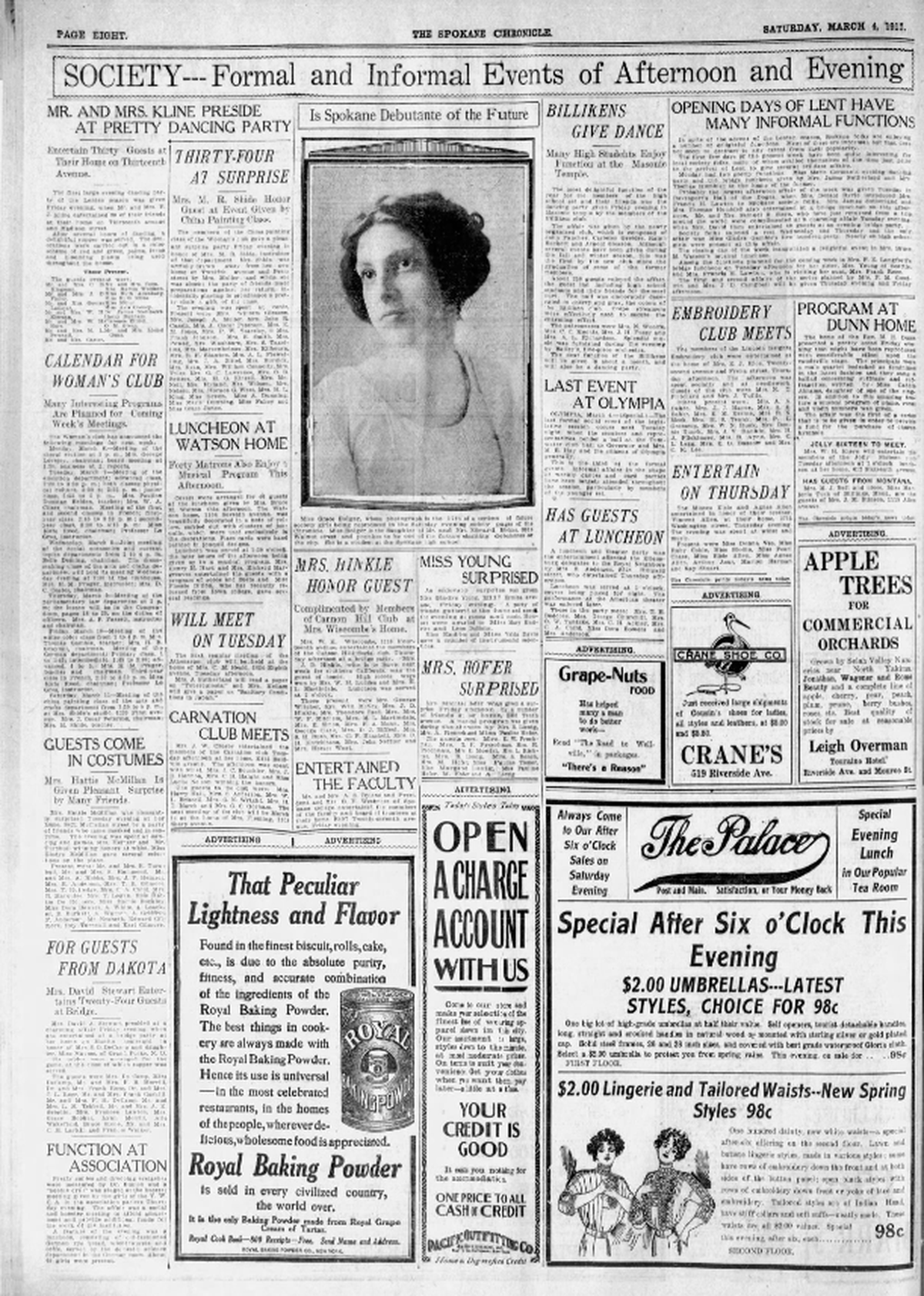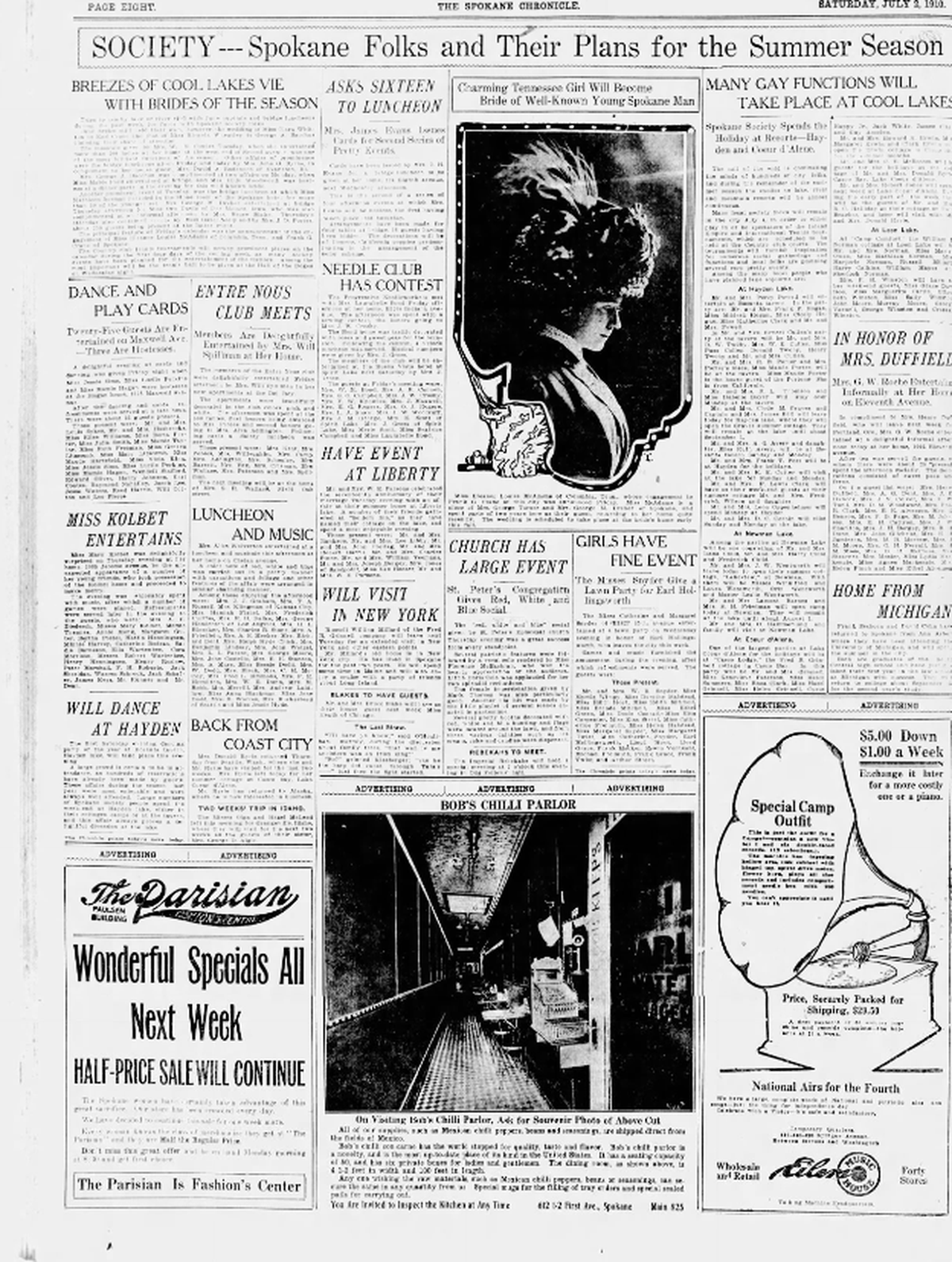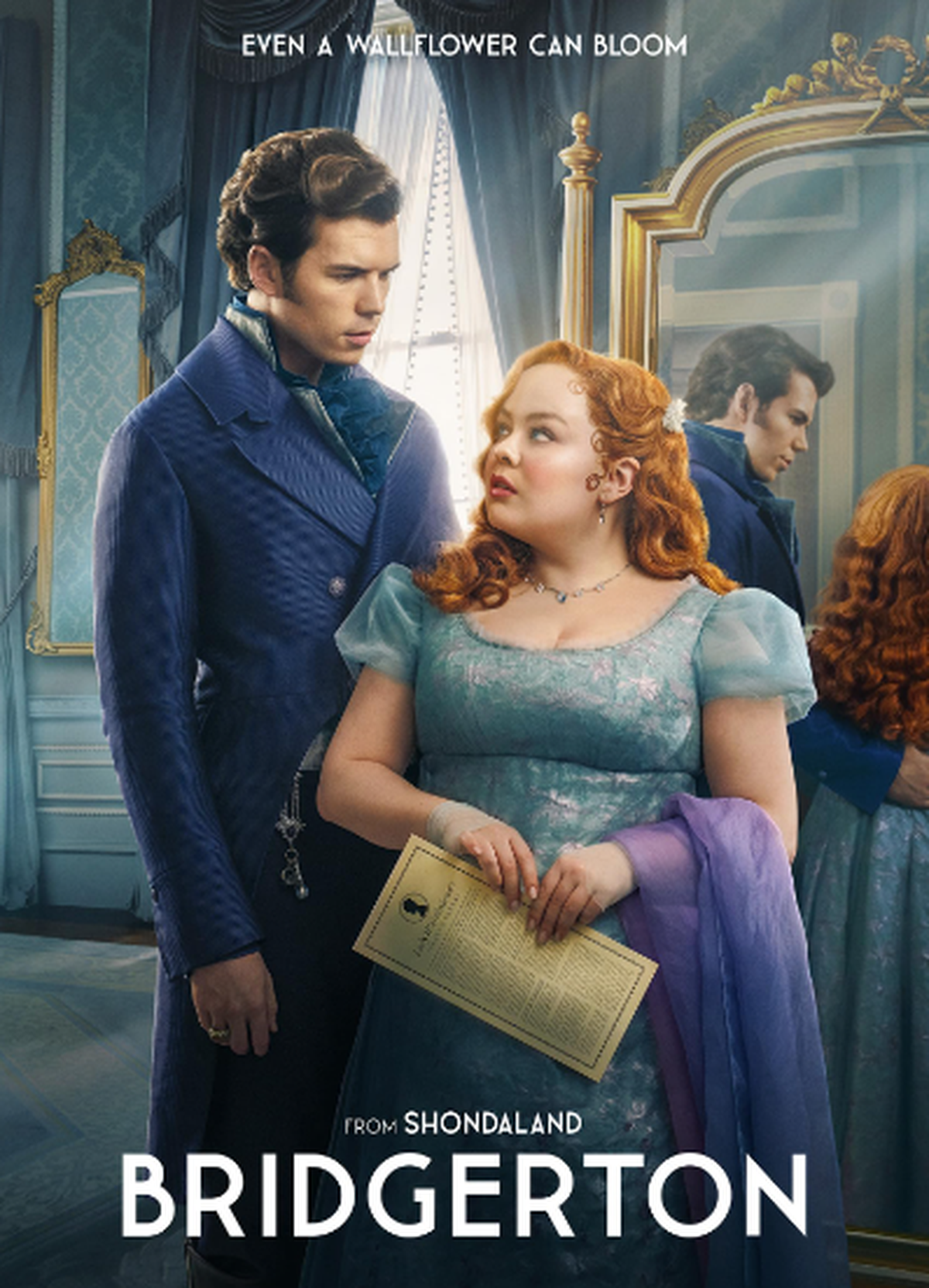Dearest Gentle Readers: Spokane Daily Chronicle had ‘Lady Whistledown’ of its own
Society pages of The Spokane Daily Chronicle on July 2, 1910.
Netflix’s regency-era series, “Bridgerton,” is set in a world of drama and romance. As the narrator for the show, anonymous gossip columnist Lady Whistledown writes about the goings-on of London’s highest class.
Similarly, for nearly 60 years, Spokane’s society pages covered every event in the local community, big or small.
The pages were filled with news including what people wore to parties, who had houseguests, who was getting engaged, or where a couple had honeymooned . The oldest society page in The Spokane Daily Chronicle was published in 1911, and the pages continued to appear in the paper into the late 1960s.
Because the events filling the society pages were organized, hosted and attended predominantly by women, this section of the newspaper was often called the women’s page.
Spokesman-Review senior correspondent and historian Jim Kershner said that the Chronicle’s society pages were typically written and edited by women.
“They would write about stuff that men might not be aware of, really,” he said. “Often, those stories were just more colorfully written and better written than a lot of the news stories were.”
Similar to Lady Whistledown’s papers, stories in the society pages were left anonymous, or were only accompanied by the author’s initials.
Unlike in “Bridgerton,” where Lady Whistledown primarily focuses her writing on powerful and royal families, The Chronicle’s society pages also included stories about everyday citizens.
“When there’s a society page, we think high society. I would say that … a lot is being talked about of other clubs and organizations than the elites,” said Richard Sola, the director of the Spokane History Reading Group.
When The Chronicle had society pages, Spokane was a social, tight-knit community. This was largely due to the endless number of clubs in the city.
Some were more exclusive, but most were easy to join. Clubs ranged from simple gardening, music or bridge to the Spokane Woman’s Club, which focused on civil betterment.
Specifically, the Spokane Woman’s Club pushed for women’s rights, and offered classes for women in topics such as public speaking. The club was instrumental to the early success of women’s suffrage in Washington state.
Women like May Arkwright Hutton, a leader of the women’s suffrage movement, were members of the club. Their mindsets that women should be allowed the same opportunities as men are similar to that of Eloise Bridgerton, who is one of the only young women to go against societal norms in “Bridgerton.”
“These (women) are not shrinking violets,” Sola said about the members of influential clubs in Spokane who were often named in the society pages.
Nicole Montgomery, a history professor at Spokane Falls Community College, said that a “proper lady” would have only wanted her name in the paper for her birth, marriage and death.
In the Chronicle’s society pages, however, women had more positive reasons to be in the paper. They might have been named as the organizer of an event, the host of an exciting visitor from California, or a guest at a gala.
“They would identify a woman who was kind of a prominent person as a club woman,” Kershner said.
There was never a lack of headlines in the society pages, as multiple events and functions were held every day.
“It’s creating instant communities and social fabric. Not just the woman’s club, but also all these other organizations that women were involved in,” Sola said. “And they’re having fun all the time. They’re having parties.”
Some headlines from the society pages were “Two-hundred enjoy dance,” “Pink tea this afternoon” and “Rose Society show enjoyed.”
The headlines also informed readers of future events with updates such as “Easter ball is planned” and “Coming fortnight promises many delightful functions.”
Some articles highlighted specific people: “Edith Willoughby wed in Portland,” “Miss Opal Bonsall plans a large afternoon function” and “Mrs. Anderson to preside at pretty bridge function.”
Other stories focused more on small society news: “Card club is formed,” “College pair are betrothed” and “New Yorkers in this city.”
The society pages effectively painted a picture of Spokane in the 1910s.
Regarding an old society story Kershner had read about a beauty salon, he said: “It was a really good piece of writing that kind of put you in the spot, in the middle. And, you know, it wasn’t news, but it was a slice of life.”
Most society page stories were like this, including details about what people were wearing, and what each moment felt like, allowing the reader to feel immersed in that slice of life.
Spokane in the 1910-20s was certainly a different scene than regency-era London.
People were still excitedly heading to parties and balls, but the women may have just been dressed in a few less ruffles. Women’s dresses were simpler than the long and layered styles worn in “Bridgerton,” and it was more common to see men in ties than cravats.
Also long out of fashion were horse-drawn carriages as the primary mode of transport. Most people hopped on one of Spokane’s many trolleys on their way to an afternoon tea.



